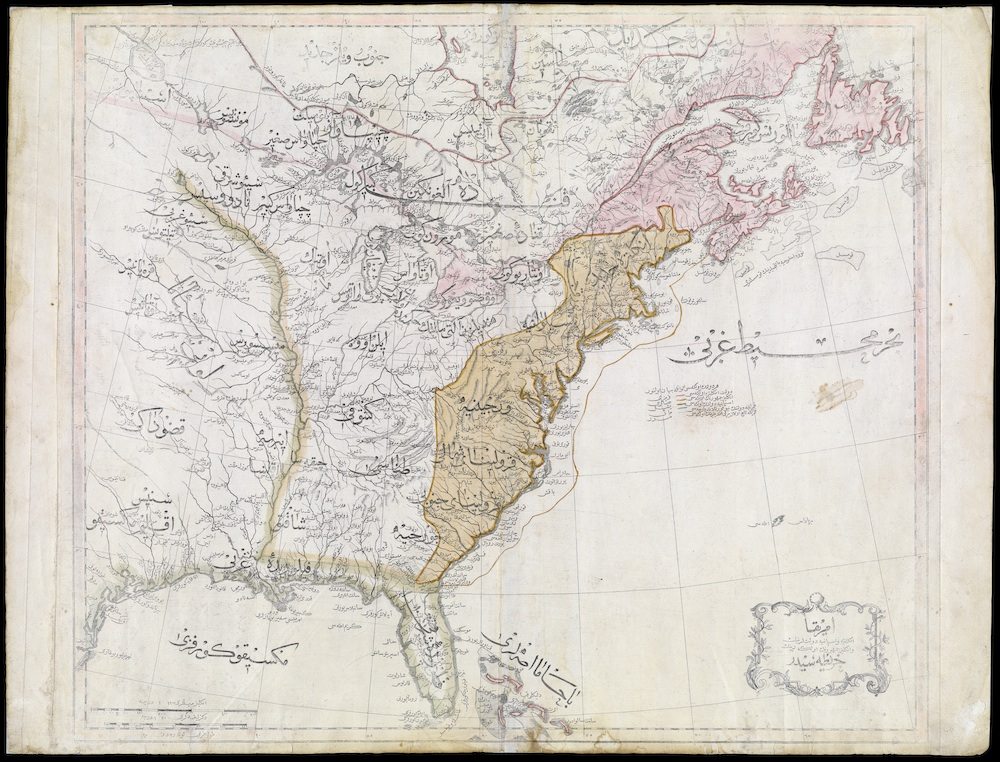What did the United States look like to Ottoman observers in 1803? In this map, the newly independent U.S. is labeled “The Country of the English People” (“İngliz Cumhurunun Ülkesi”). The Iroquois Confederacy shows up as well, labeled the “Government of the Six Indian Nations.” Other tribes shown on the map include the Algonquin, Chippewa, Western Sioux (Siyu-yu Garbî), Eastern Sioux (Siyu-yu Şarkî), Black Pawnees (Kara Panis), and White Pawnees (Ak Panis).
The Ottoman Empire, which at the time this map was drawn included much of the Balkans and the Middle East, used a version of the Turkish language written in a slightly modified Arabic script. Ottoman script works particularly well on maps, because it allows cartographers to label wide regions by elongating the lines connecting individual letters.
This appears to be the first Ottoman map of the United States, but Ottoman maps of North America have a much longer history. The first were the 16th-century nautical charts of the famous Ottoman cartographer Piri Reis. Some of the last, drawn before the new Turkish Republic switched to Latin script in 1928, show air routes spanning the continental U.S.
American relations with the Ottoman Empire in the 19th century were either commercial or missionary. American missionaries to the empire first tried to win Christian converts. But after meeting with little success, they turned to creating schools to spread the much more popular American gospel of English fluency and engineering excellence.
At times, the mercantile and missionary impulses came into conflict, such as when Greek Christians rebelled against the Ottoman sultan. Many Americans felt their government had a moral duty to stand with co-religionists against a Muslim despot. The U.S. government, however, felt a more pressing duty to stand with its merchants and sea captains, who’d been doing brisk business with the sultan. Supposedly, it was in recognition of U.S. support of the establishment that the empire later sided with the Union during America’s own civil war.

